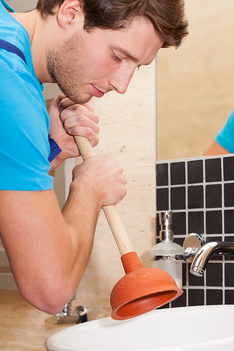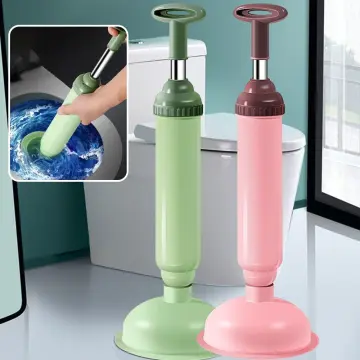Ways to Properly Apply Plunger and Drain Cleaners: Pro Guidance
Ways to Properly Apply Plunger and Drain Cleaners: Pro Guidance
Blog Article
Listed here below you'll find a lot of reliable guidance relating to How to Use a Plunger to Unclog a Toilet or Drain.

Intro
Proper upkeep of house drains is essential for preventing obstructions and guaranteeing smooth water flow. Among the key devices in every homeowner's toolkit is the plunger, together with various drain cleaners made to take on stubborn obstructions efficiently. This write-up checks out how to make use of plungers and drainpipe cleaners effectively to maintain your drains flowing easily.
Section 1: Comprehending Bettors
Sorts of Plungers
There are a number of sorts of bettors readily available, each created for various types of drains pipes and obstructs. One of the most common types include mug plungers, flange plungers, and accordion bettors.
How Plungers Work
Plungers deal with the principle of creating pressure and suction to dislodge obstructions. When properly used over a drainpipe, they produce a vacuum that can pull out debris or separate obstructions.
Selecting the Right Plunger
Selecting the appropriate bettor depends on the sort of drainpipe and the nature of the clog. Mug plungers are perfect for sinks and bathtubs, while flange bettors are much better fit for commodes due to their style.
Usual Mistakes with Bettors
Avoiding these errors guarantees effective plunging: incorrect seal around the drainpipe, insufficient pressure, and not clearing surrounding particles.
Area 2: Utilizing Plungers Effectively
Prep work
Prior to diving, make sure the plunger covers the drain completely and forms a tight seal. Clear any kind of noticeable particles around the drainpipe opening.
Technique
Beginning with mild diving activities to construct suction. Increase pressure progressively, using a constant rhythm. Repeat as needed until the drain clears.
Troubleshooting Tips
If diving doesn't work, try readjusting the seal, applying petroleum jelly for a far better seal, or making use of a different kind of bettor.
Area 3: Understanding Drainpipe Cleansers
Types of Drainpipe Cleaners
Drain pipes cleaners can be chemical or chemical. Chemical cleansers use solid chemicals to liquify clogs, while enzymatic cleaners use natural enzymes to break down raw material.
How Drainpipe Cleansers Job
Chemical cleansers respond with obstructions to liquify them, while enzymatic cleansers break down organic materials like hair and oil without hurting pipelines.
Safety Factors to consider
Constantly wear gloves and eye defense when utilizing chemical drainpipe cleaners. Guarantee adequate air flow and adhere to maker instructions carefully.
Eco-Friendly Alternatives
Take into consideration using vinegar and cooking soda or enzyme-based cleaners for eco-friendly alternatives that are safer for pipelines and the atmosphere.
Section 4: Utilizing Drain Cleaners Effectively
Application Techniques
Pour chemical cleaners straight into the drainpipe opening. Allow them to help the recommended time prior to purging with warm water. Chemical cleansers need to sit over night.
Preventative measures
Stay clear of blending different kinds of cleaners, as this can create toxic fumes. Never utilize chemical cleansers along with a bettor, as splashing can occur.
Taking Care Of Stubborn Clogs
For relentless clogs, consider utilizing a plumbing snake or calling a professional plumbing to avoid damages to pipes.
Verdict
Finally, recognizing how to make use of plungers and drain cleansers efficiently is important for preserving healthy and balanced pipes systems. By picking the right devices and methods, house owners can deal with minor clogs and prevent significant pipes problems down the line.
How To Properly Use A Plumbing Snake To Clear Drains
When any drain clogs in our home arise, we tend to gravitate toward the plunger and little else. In cases where the plunger and its vacuum-created pressure are not able to clear clogs, many immediately move to harmful chemicals or simply call their plumber to fix the issue.
we’re happy to help with all drain cleaning needs and concerns. This includes informing you on a few other home remedies you may have at your disposal for minor to moderate clogs, one of which is the use of a plumbing snake. Many people have never used one of these before – let’s go over the steps to take when your drain clogs and you have a plumbing snake available.
Attempt Plunger Use
The first step here, as we noted above, should indeed be to grab your plunger when you notice a drain clog and attempt to resolve it this way. If you’re unsure how to use a particular type of plunger, our plumbers can answer any questions you have. If this doesn’t do the trick, however, you move on to the snake.
Locate And Prepare Snake
A plumbing snake is a metal or plastic device that’s generally about a quarter of an inch thick. It’s design with significant extensions, meant to reach down into your clogged drain and push the clog out. Snakes also contain drain augers that will latch onto and push stubborn blockages.
If your plunger doesn’t clear a clog, locate your snake and bring it to the drain in question. We also recommend keeping a bucket nearby to collect the clog once you pull it out, plus we’d advise wearing goggles and possibly protective gloves.
Feed Snake
Once you’re ready to go, feed the snake slowly down the drain, using the crank device it comes with to keep it moving until it finds the clog. Once this happens, much of the clog will be latched onto the coil so you can pull it out, while the rest will simply break up and flow downward.
Detach Debris
Remove the snake slowly from the drain, and once you’ve done so, pick off any debris that’s stuck to the coil. This is another area where wearing gloves is a must.
Flush Drain
Finally, take a few minutes to ensure the snake has done its job correctly. If you’ve been using it on a toilet, flush the toilet a couple times and make sure everything flows well. If you’ve used it on a different drain, flush it with some room temperature water.
https://www.mybuddytheplumber.com/blog/how-to-properly-use-a-plumbing-snake-to-clear-drains/

Application Techniques
Pour chemical cleaners straight into the drainpipe opening. Allow them to help the recommended time prior to purging with warm water. Chemical cleansers need to sit over night.
Preventative measures
Stay clear of blending different kinds of cleaners, as this can create toxic fumes. Never utilize chemical cleansers along with a bettor, as splashing can occur.
Taking Care Of Stubborn Clogs
For relentless clogs, consider utilizing a plumbing snake or calling a professional plumbing to avoid damages to pipes.
Verdict
Finally, recognizing how to make use of plungers and drain cleansers efficiently is important for preserving healthy and balanced pipes systems. By picking the right devices and methods, house owners can deal with minor clogs and prevent significant pipes problems down the line.
How To Properly Use A Plumbing Snake To Clear Drains
When any drain clogs in our home arise, we tend to gravitate toward the plunger and little else. In cases where the plunger and its vacuum-created pressure are not able to clear clogs, many immediately move to harmful chemicals or simply call their plumber to fix the issue.
we’re happy to help with all drain cleaning needs and concerns. This includes informing you on a few other home remedies you may have at your disposal for minor to moderate clogs, one of which is the use of a plumbing snake. Many people have never used one of these before – let’s go over the steps to take when your drain clogs and you have a plumbing snake available.
Attempt Plunger Use
The first step here, as we noted above, should indeed be to grab your plunger when you notice a drain clog and attempt to resolve it this way. If you’re unsure how to use a particular type of plunger, our plumbers can answer any questions you have. If this doesn’t do the trick, however, you move on to the snake.
Locate And Prepare Snake
A plumbing snake is a metal or plastic device that’s generally about a quarter of an inch thick. It’s design with significant extensions, meant to reach down into your clogged drain and push the clog out. Snakes also contain drain augers that will latch onto and push stubborn blockages.
If your plunger doesn’t clear a clog, locate your snake and bring it to the drain in question. We also recommend keeping a bucket nearby to collect the clog once you pull it out, plus we’d advise wearing goggles and possibly protective gloves.
Feed Snake
Once you’re ready to go, feed the snake slowly down the drain, using the crank device it comes with to keep it moving until it finds the clog. Once this happens, much of the clog will be latched onto the coil so you can pull it out, while the rest will simply break up and flow downward.
Detach Debris
Remove the snake slowly from the drain, and once you’ve done so, pick off any debris that’s stuck to the coil. This is another area where wearing gloves is a must.
Flush Drain
Finally, take a few minutes to ensure the snake has done its job correctly. If you’ve been using it on a toilet, flush the toilet a couple times and make sure everything flows well. If you’ve used it on a different drain, flush it with some room temperature water.
https://www.mybuddytheplumber.com/blog/how-to-properly-use-a-plumbing-snake-to-clear-drains/

We were made aware of that editorial about A Guide to Plungers (and How to Use Them) through a pal on a different website. Are you aware of somebody who is fascinated about the subject? Do not hesitate to promote it. Thanks a bunch for your time. Come back soon.
Call Today Report this page